Essential aspects of using proper time registration for offshore wind personnel and technicians
Planning and scheduling: One of the main reasons why time registration is essential in the wind industry is because it allows for better planning and scheduling. According to Lien (2022), “more resources and infrastructures are required to install and maintain offshore wind turbines, resulting in higher operation, installation, and maintenance costs for offshore wind farms. Operations and maintenance contribute to a high percentage of the total cost. These costs can be reduced by making the maintenance activities more efficient by optimizing maintenance vessel routing and maintenance schedules.” This means that by accurately tracking the time spent on maintenance and repairs, wind farm operators can ensure that their turbines run at optimal capacity and minimize downtime.
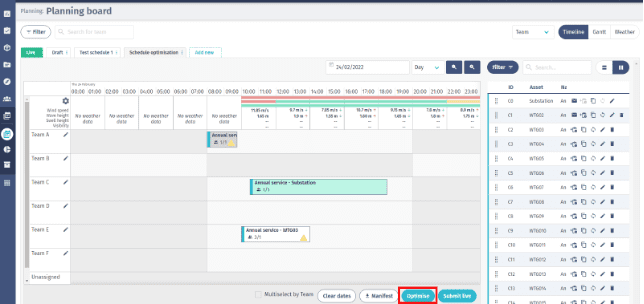
Resource allocation: Another critical aspect of time registration is that it allows for better resource allocation. “Offshore wind farm managers and schedulers need to manage large numbers of wind turbine visits every day, in order to: repair minor faults; conduct inspections; and perform scheduled service operations. Daily schedules form a choice of which maintenance activities to conduct, taking account of: constraints on weather conditions, shifts, vessel and technician capabilities and availability; and the impact of activities on wind farm profitability. This forms a formidable optimization challenge that today is solved “by hand” by a scheduler.” (Stock-Williams & Swamy, 2019). This means that by having accurate information on how much time and resources are being spent on different tasks, wind farm operators can make more informed decisions about where to allocate resources to maximize efficiency and productivity.
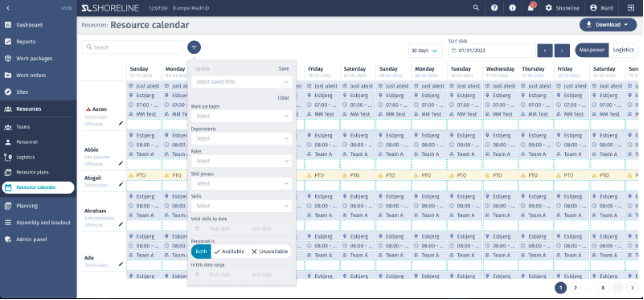
Operational excellence: Operational excellence is also an essential consideration for the wind industry. “Well-planned, properly scheduled, and effectively communicated jobs accomplish more work, more efficiently, and at a lower cost” (Nyman & Levitt, 2010). To continue to drive innovation and growth in the wind energy sector, companies must be able to operate their wind turbines at the highest level of efficiency and effectiveness. Time registration allows companies to track the time that technicians and offshore personnel spend on specific tasks and projects, which can then be used to identify areas for improvement. By identifying and addressing these areas, companies can improve their operational efficiency and effectiveness, leading to increased innovation and growth in the wind energy sector.
Billing: Billing correctly is also one of the primary reasons for time registration in the wind industry. “Wind power deployment has expanded rapidly and wind energy is now among the lowest-cost means of electricity supply and energy-sector decarbonization in many regions” (Wiser et al., 2021). However, to ensure that wind energy remains cost-effective, companies must be able to accurately bill their customers for the time and resources spent on maintaining and operating wind turbines. Time registration allows companies to track the hours that technicians and offshore wind personnel spend on specific projects and tasks, which can then be used to calculate the cost of those services
Safety: A critical reason for a solid time registration solution is also safety. According to European Agency for Safety and Health at Work (EU-OSHA, 2017), “The wind energy sector is still relatively new, with wind turbine technology constantly progressing in tower design and component technology. These modifications create an on-going responsibility to ensure that workers who conduct installations, routine operations and maintenance procedures on wind turbines do so under the safest possible conditions.”. To minimize these risks, it is essential that technicians and offshore personnel can accurately track the time they spend working on wind turbines. This allows companies to identify any potential safety hazards and take action to mitigate them, for example, ensuring that technicians have enough breaks and resting time before tackling hazardous operations. Additionally, time registration can be used to track the training and qualifications of technicians and offshore wind personnel, ensuring that only those properly trained and qualified are working on wind turbines.
Uptime: is another critical concern for the wind industry. According to research from Ember (Dave Jones et al., 2023), “For the first time, wind and solar generated more than 10% of electricity globally in 2021“. To ensure that wind energy continues to make a significant contribution to the global energy mix, wind turbines must be able to operate at maximum capacity. Time registration allows companies to track the time that technicians and offshore wind personnel spend on maintenance and repairs, which can then be used to identify any issues causing downtime. By identifying and addressing these issues, companies can ensure that their wind turbines can operate at maximum capacity, maximizing their output and minimizing costs.
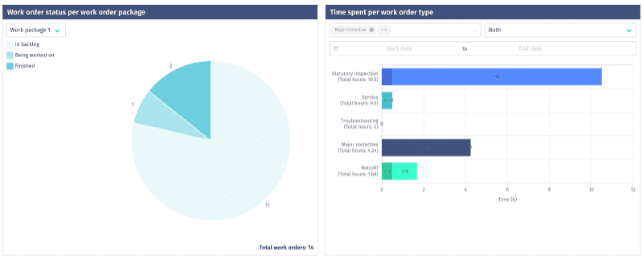
The challenges of maintaining and implementing a system that presents accurate data for tracking different tasks and activities
One of the main benefits of time registration in the wind industry is that it helps to ensure compliance with labour laws and regulations. For example, in the United States, the Fair Labor Standards Act (FLSA) requires employers to keep accurate records of the hours worked by their employees, including those working in the wind industry. This includes recording the start and end times of each workday, as well as any overtime hours that are performed. Additionally, many states have their own regulations regarding time registration, which may also need to be complied with.
However, implementing and maintaining a time registration system can present challenges. One of the main challenges is that it can be difficult to ensure that all technicians and offshore personnel accurately track their time. According to the Harvard Business Review (2015), “Harvard Business Review’s research on time tracking shows that the U.S. economy loses $7.4 billion a day in productivity from workers who haven’t recorded their hours. Employees commonly forget to track time they have spent in work-related communication, like emails, calls and meetings. The repercussions for businesses of all sizes are serious, but they can be easily fixed with a solid strategy for proper time tracking.” This means that if technicians are not motivated to track their time accurately, the data collected may not be reliable and can lead to inaccurate planning and resource allocation.
Another challenge with time registration is that it can be difficult to keep track of all the different tasks and activities being performed. According to Khalfay et al.(2017), “A technician and task scheduling problem requires the creation of timetables for employees in order to serve customers, each having skill requirements. Optimised scheduling can reduce the cost of a workforce and save the employer’s significant amount of money whilst maintaining customer and workforce satisfaction“. This means that if the time registration system is not set up in a way that allows for easy tracking of different tasks and activities, it may not be able to provide the accurate data needed for effective planning and resource allocation.
Companies need to have a clear and well-defined time registration system to address these challenges. This includes having clear guidelines and procedures for tracking time and regular training and supervision to ensure that technicians and offshore personnel follow these guidelines. Additionally, it is essential for the time registration system to be set up in a way that allows for easy tracking of different tasks and activities and for the data to be easily accessible and understandable.
Time registration system that presents real-time monitoring and offline capabilities in an easy digital framework.


Shoreline Wind, the industry leader in developing intelligent SaaS (Software as a Service) solutions for powering wind energy, has implemented several measures to address these challenges. One of the key measures that they have implemented is a comprehensive solution for technicians and offshore personnel to track their time accurately. Shoreline’s digital solution and training program ensure that all technicians and offshore personnel are familiar with the time registration system and understand the importance of accurate time tracking.

Shoreline Wind’s state-of-the-art time registration system allows for easy tracking of tasks and activities and recording hours, even when working in remote locations when users find themselves with a slow or no network connection. Shoreline digital time tracking system allows for real-time monitoring of personnel and activities on wind farm sites, quickly identifying and addressing any issues that may arise and accurately tracking progress and resource usage.
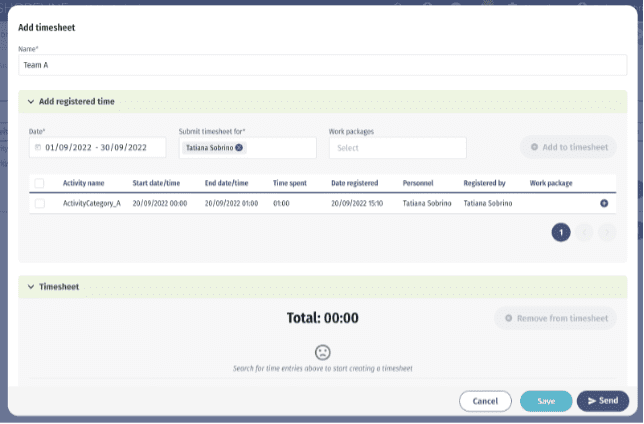
Shoreline Wind solution is intuitive and easy to navigate, allowing technicians to log their time and activities quickly and easily with minimum onboarding training. The solution also enables recording time on behalf of others (e.g., a team lead for her team of technicians). Ease of use cannot be highlighted enough as it will facilitate the speed of adoption of the solution and ensure its use over time.
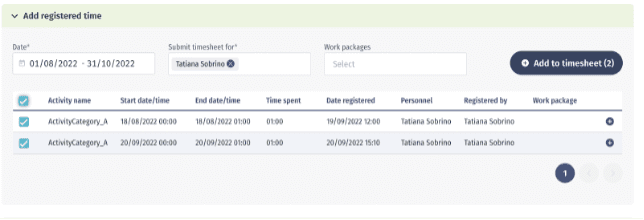
With Shoreline Wind, every manager involved with personnel working on wind turbine projects, from resource managers through installation managers to project managers, can easily have an overview of time spent per work order type or activity category. Man-hours lost per adverse event category to daily progress reports and detailed reports of personnel time registered.
If you want to know more about Shoreline Wind’s time registration system for the offshore wind industry – You can sign up for our upcoming webinar “Time registration and scheduling made easy” which focuses on our Resource Management & Planning solution and how it can enable planners and resource managers to ensure that qualified personnel are available to carry out operations and that employees accurately report their time.
Author: Bertrand Barouti, Product Manager – Execution

